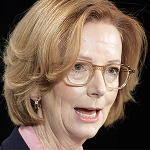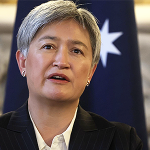Sir Keir Starmer has been tireless in his diplomatic efforts to construct a ‘coalition of the willing’ and send a peacekeeping force to Ukraine. At the weekend, he hosted a conference call with 29 other world leaders, and on Thursday the defence secretary, John Healey, will convene a meeting of military chiefs at the MoD’s Permanent Joint Headquarters at Northwood ‘to put strong and robust plans in place to swing in behind a peace deal and guarantee Ukraine’s future security’.
The Prime Minister’s commitment is firm and public. Along with likely partners France, Turkey, Canada and Australia, the United Kingdom is ready to contribute to a military force of up to 30,000 personnel to be deployed in Ukraine. The government has said that ‘it would be a long-term commitment, we are talking about years’. However clear and definitive these promises are, though, they are weirdly back-to-front and based on extremely dubious assumptions.
More broadly – and it is worrying that this needs to be said – there is currently no peace to be kept
Ever since President Donald Trump disclosed in February that he had unilaterally spoken to Vladimir Putin to explore how to end the war in Ukraine, Starmer has pivoted energetically to posing as the champion and architect of a peacekeeping force for the conflict. It is a transparent attempt to find a global role and strategic relevance for the UK, but that is not inherently something to criticise the Prime Minister for. His vision of Britain as a ‘bridge’ between Europe and the United States is ambitious, although hardly novel, and it has given him a degree of standing in recent weeks.
There is, however, a strange unreality about these discussions, a topsy-turvy sense of Alice Through The Looking Glass. Current discussions are focusing on the likely size of the force, which at 30,000 seems unlikely to be of much use. But how can planners possibly even anticipate how large it will need to be when, as Starmer and others admit, its role is not yet defined and it has no agreed rules of engagement? We do not yet know what the peacekeeping force is going to do, yet we are able to say how large it should be.
More broadly – and it is worrying that this needs to be said – there is currently no peace to be kept. There is a plan for a 30-day ceasefire, which President Putin has greeted with so many qualifications that it is effectively a rejection. But there is no clear vision of a settlement that has come close to being universally accepted which would see the war in Ukraine end. Starmer has made a tool, to use an analogy with which he may be familiar, without knowing what purpose it will be expected to perform.
There are other major practical hurdles to the coalition of the willing’s peacekeeping force. Russia has said repeatedly that it will not, under any circumstances, accept military personnel from Nato countries on the ground in Ukraine. President Macron has dismissed this, saying ‘If Ukraine asks allied forces to be on its territory it is not up to Russia to accept or not’. If his view and that of President Putin both hold firm, there will be and can be no peace settlement.
Starmer has also insisted that his commitment to the deployment of peacekeeping force is conditional on the United States providing a security guarantee to Ukraine. This American ‘backstop’, as he has described it, would be some kind of understanding that US military capabilities, especially air power, would be available in the event of Russia breaking the terms of a settlement. President Trump has ruled this out, arguing that the presence of American workers in Ukraine following a deal on access to minerals would provide its own guarantee.
It is also not clear how many troops the UK would provide, or how. In theory, the army is committed under Nato plans to the provision of the armoured 3rd (UK) Division for operational requirements, but it is widely accepted we cannot currently fulfil this commitment because of personnel and equipment shortages. Under Operation Cabrit, around 1,000 soldiers are currently deployed in Estonia and Poland as part of Nato’s enhanced forward presence. In addition to this and other deployments, generating, say, a brigade-sized formation of 4,500 would be challenging; anything more is unlikely to be possible.
There is a long way to go before a settlement that resolves all of these issues is negotiated; indeed, success is not guaranteed. The Prime Minister’s detailed discussions of the next steps blithely wave the obstacles away despite very firmly stated positions by Trump, Putin and others, and are dedicated to the execution of an as-yet-undefined task with unidentified resources. Starmer has started at the end and is working back, but will he ever meet reality?








